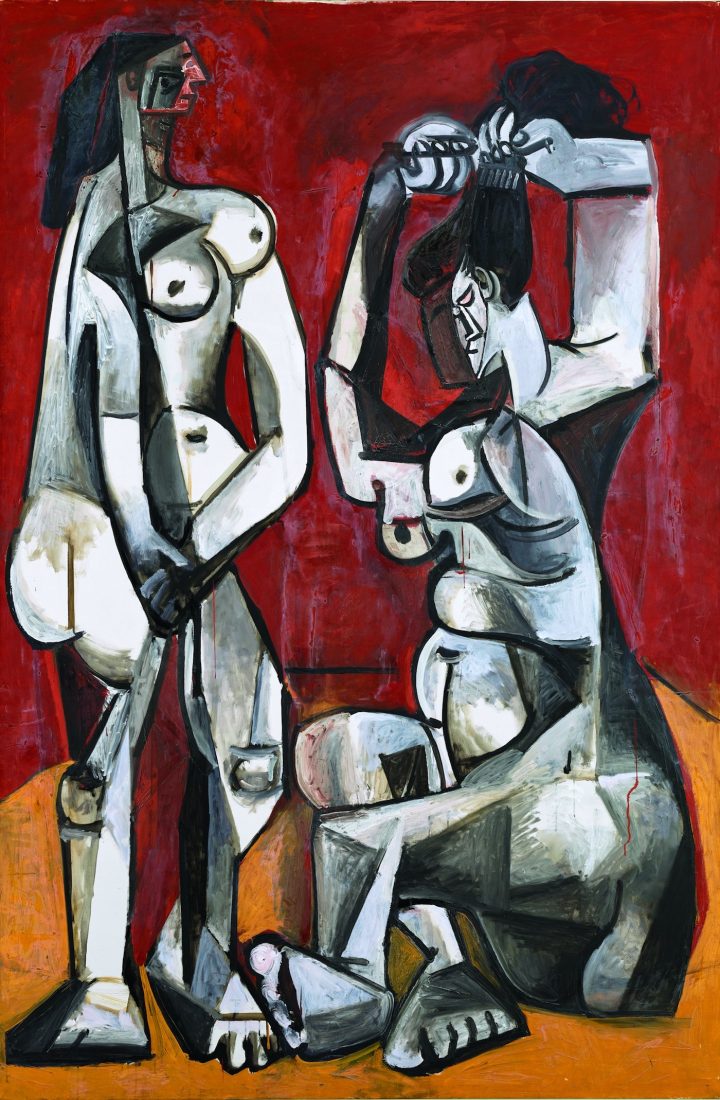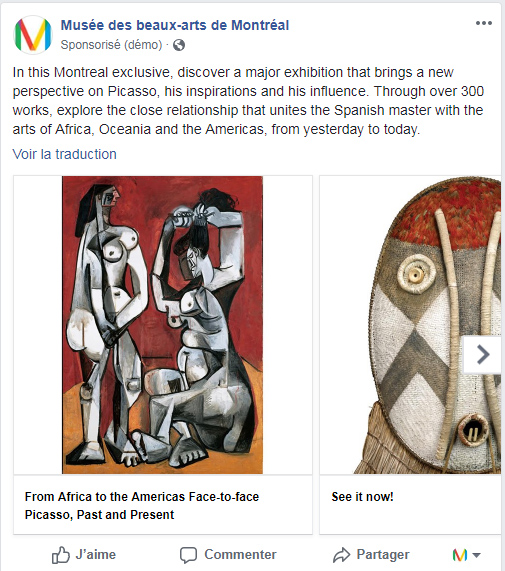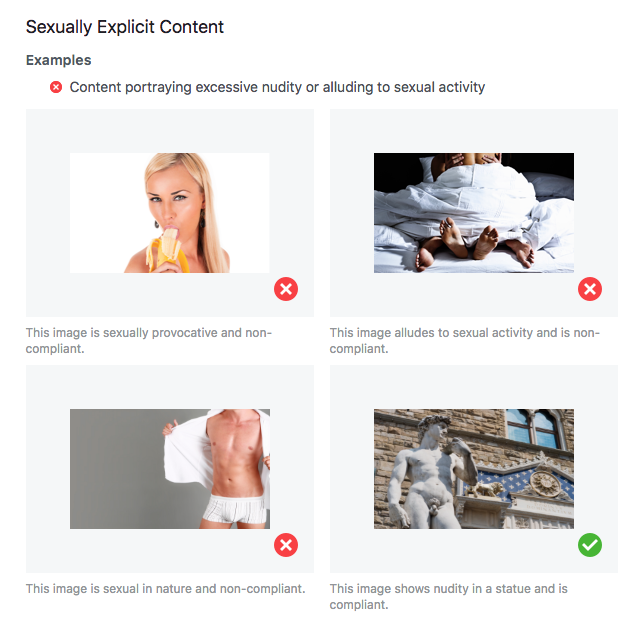IN BRIEF
Facebook Censors Montreal Museum of Fine Art’s Ad Featuring Nude Picasso Painting
Picasso’s subjects are often nude, but it’s not like they’re trying to meddle in the U.S. presidential elections. Why censor them, Facebook?

The Montreal Museum of Fine Arts was shocked last week when an advertisement for its new blockbuster Picasso show was rejected by Facebook’s censors because it featured a handful of nude subjects. What was meant to be the museum’s summer blockbuster exhibition was somewhat stalled, forcing the museum to reach out directly to the social media behemoth for answers.
Although Facebook’s community guidelines allow users to post artworks featuring non-photographic nude figures, the algorithm that monitors content and reports it to human censors is notably fussy. In 2016, we reported that the company had censored a photo of Copenhagen’s famous “The Little Mermaid” statue, which is ironically the Danish country’s most photographed sculpture. And back in 2013, Hyperallergic itself was Facebook censored for posting an article that included artist Kate Durbin’s photo of a woman’s exposed butt. (Many artists have noted a similar issue with the algorithm that roves Instagram, a subsidiary of Facebook.)

The company’s guidelines for advertising are also actually stricter for posting content, explicitly banning adult content including:
Ads must not contain adult content. This includes nudity, depictions of people in explicit or suggestive positions, or activities that are overly suggestive or sexually provocative.
Looking through the stipulation’s details, though, it’s easy to see how things can get confusing for the censors. The first example of sexually suggestive content that “nudity or implied nudity, even if artistic or educational in nature, except for statues,” would be banned. There’s also a ban for what’s called “excessive nudity,” with a notable exception being Michelangelo’s famous early-sixteenth century sculpture of David. (A complete ban on images of women eating bananas, however.)

Key here is the guideline’s emphasis on sculpture as the exception to the rule, which disregards the vast array of other media that might include nudity for art’s sake. The museum even tried switching the ad with different images three times, but each contained at least one breast and was therefore felled by the Facebook algorithm. Recognizing the Picasso from the Montreal museum’s ads, Facebook’s algorithm even rejected another attempt by the museum to advertise their exhibition when they used an installation photo that had the nude painting distantly in the background.
“It’s ridiculous. It’s Picasso,” Pascale Chassé, a museum spokesperson, told CBC Montreal. “It was funny for us, you know, like unbelievable.”
The museum eventually complained to the social media company, which agreed that it would review its guidelines so that more paintings like Picasso’s can pass the never-nude scrutiny of their algorithm.
No comments:
Post a Comment